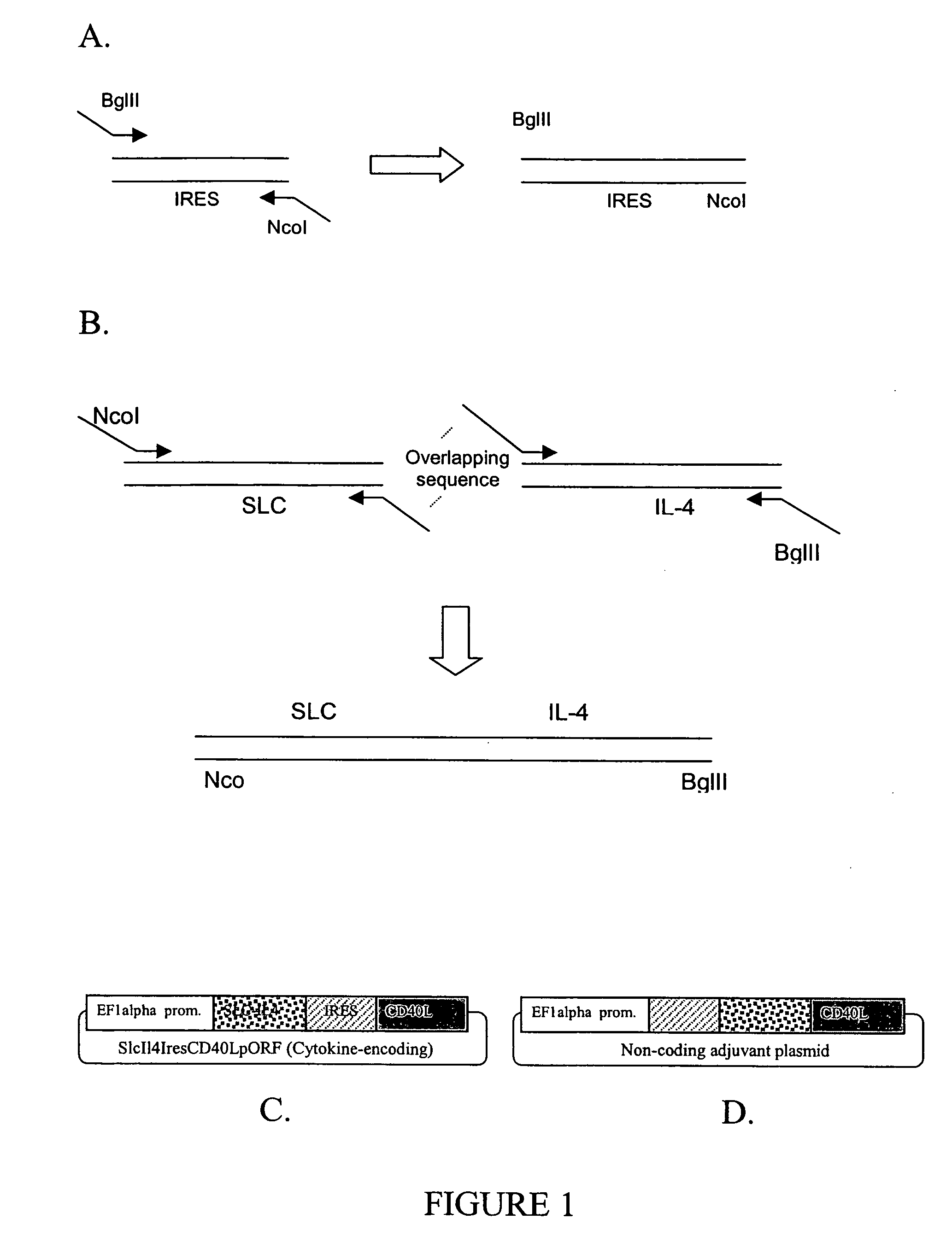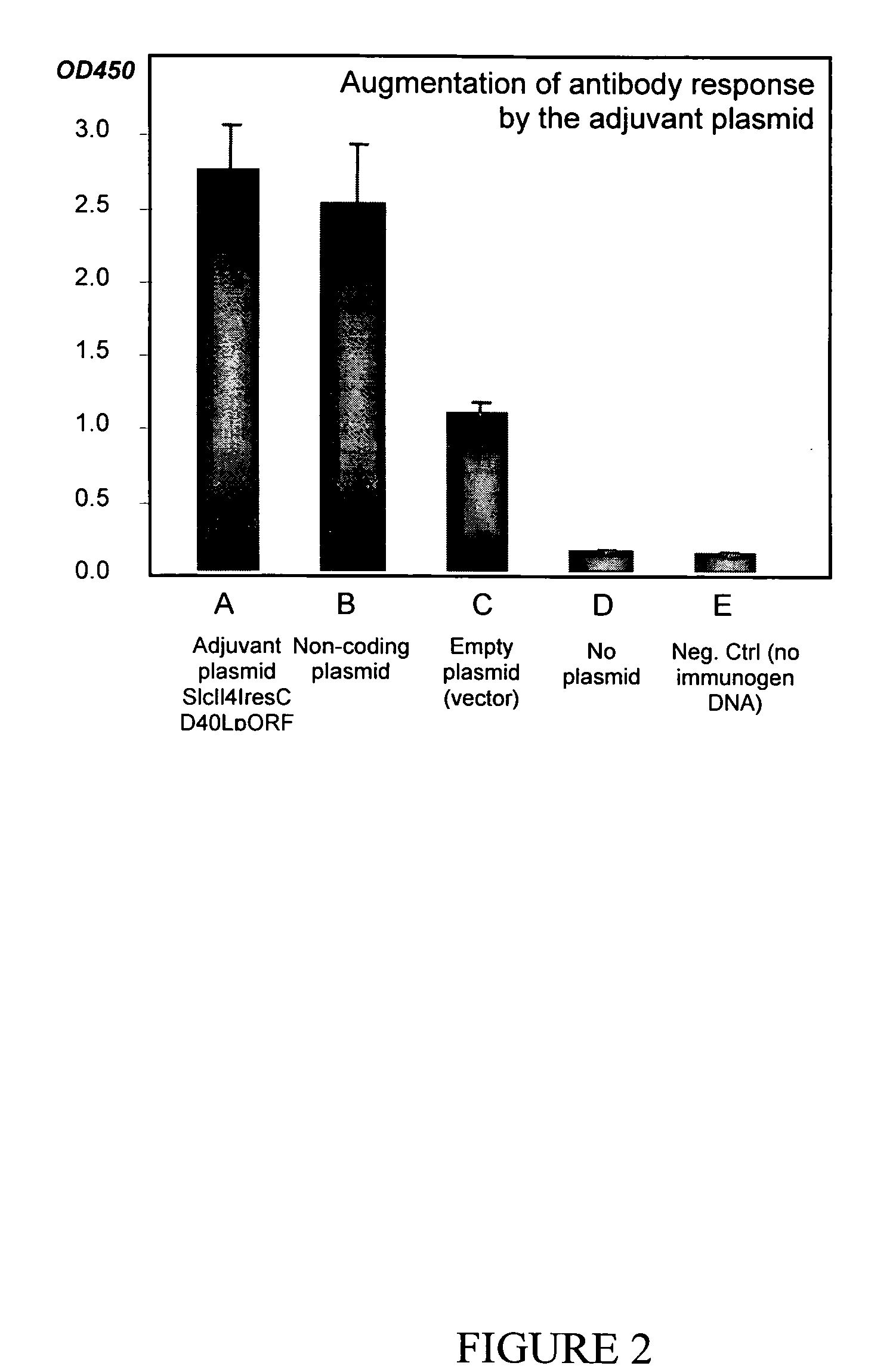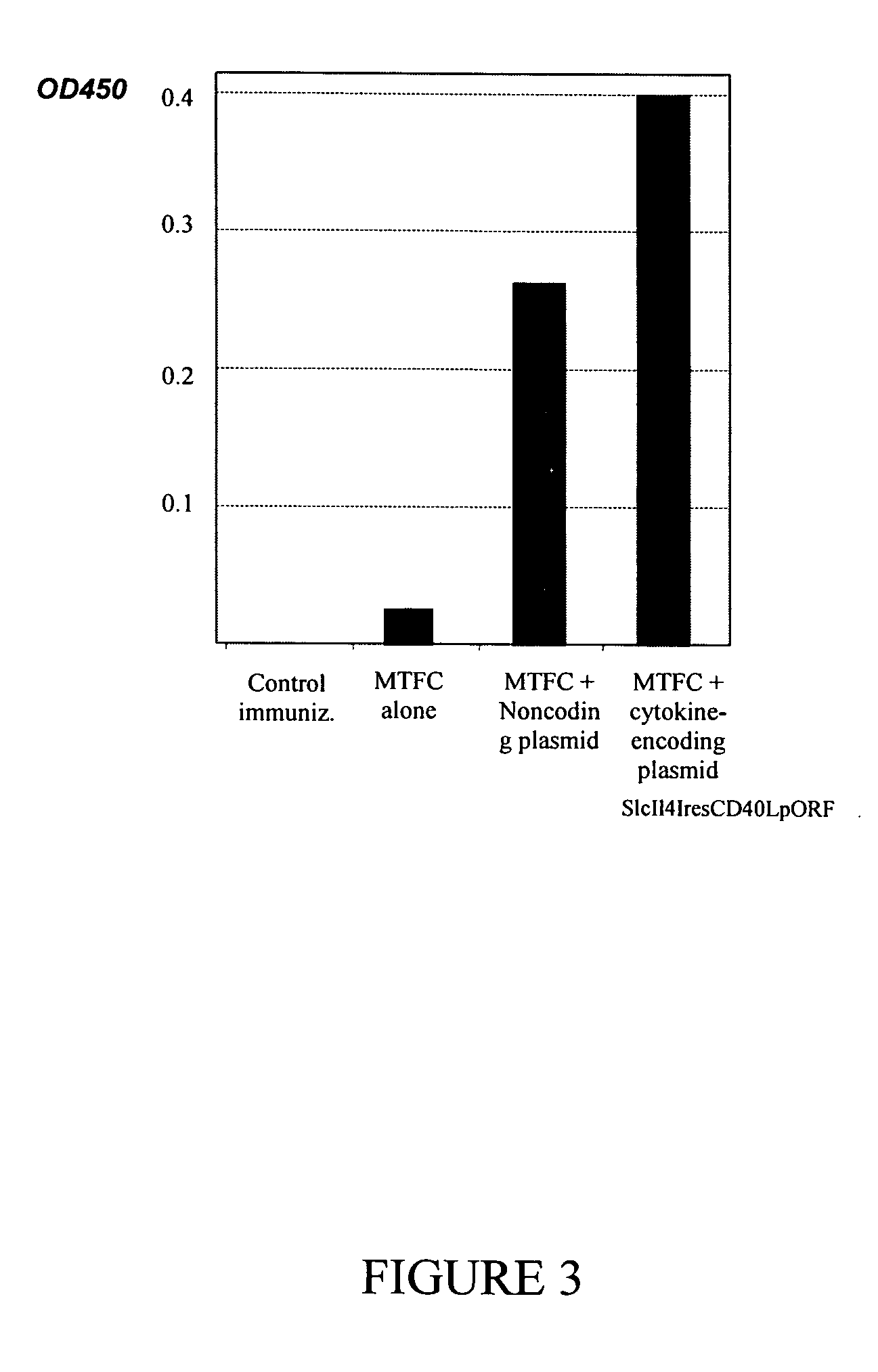Bacterial plasmid with immunological adjuvant function and uses thereof
a technology of immunological adjuvant and plasmid, which is applied in the field of immunotherapy, can solve the problems of granulomas, abscesses and scarring, severe local reactions, and often unknown mechanisms of these adjuvants
- Summary
- Abstract
- Description
- Claims
- Application Information
AI Technical Summary
Benefits of technology
Problems solved by technology
Method used
Image
Examples
example 1
Production of Plasmid Adjuvant
[0130] A plasmid, named SlcIl4resCD40LpORF and a non-coding variant were constructed as follows. Plasmid SlcIl4resCD40LpORF has the configuration of EF1 alpha-SLC / IL4 fusion-IRES-CD40 ligand as depicted in FIG. 1C. The plasmid was produced by PCR linking the different fragments into pORF-mCD40L v.15 (InvivoGen, San Diego, Calif.). This plasmid contains the CD40 ligand sequence. The IL4 sequence was from pORF-mIL04 v.11 (InvivoGen). The SLC and IRES sequences were from pGT60mExodus2 v.02 (InvivoGen).
[0131] 1a: Converting IRES into a BglII-NcoI Fragment:
[0132] The internal ribosome entry sequence (IRES) was amplified from an IRES-containing plasmid (pGT60mExodus2, Invivogen) using primers containing BglII and NcoI sites, as shown in FIG. 1A.
[0133] 1b: The SLC-IL-4 Fusion Construct as an NcoI-BglII Fragment:
[0134] Mouse forms of SLC and IL-4 were amplified by PCR from, respectively, a SLC plasmid (pGT60mExodus2) from Invivogen and a IL-4 plasmid from ...
example 2
Enhanced Immunogenicity of Human PSA using a Plasmid Adjuvant
[0137] In order to assess whether plasmid SlcIl4resCD40LpORF enhanced the immunogenicity of a coadministered antigen, in this case a nucleic acid construct encoding the human prostate-specific antigen (PSA), the following experiment was conducted. The PSA nucleic acid immunogen was produced as DNA fragments capable of expressing the PSA protein using a ligase-assisted PCR amplification method as described in commonly owned, copending patent application entitled “A High-Throughput Method of DNA Immunogen Preparation and Immunization” Attorney docket number 7037-0001), filed Nov. 26, 2004, incorporated herein by reference in its entirety.
[0138] Animal immunization was achieved electrically through the electroporation of leg tissues with the antigen-encoding DNA, essentially as described in Selby et al., J. Immunol. (2000) 164:4635-4640. Briefly, the TA (tibialis anterior) muscle regions of the two hind legs were shaved and...
example 3
Enhanced Immunogenicity of Human MTF Using a Plasmid Adjuvant
[0142] The human MTF gene, normally encoding an intracellular protein, was used to examine the immune adjuvant effects of the plasmid SlcIl4IresCD40LpORF. The 3′ terminal 1.1 kb region of the MTF open reading frame (MTFC) was amplified by PCR and fused to a secretory signal sequence encoding the N-terminal 20 amino acids from the murine Ig-kappa gene. Expression DNA fragments were produced using a ligation-assisted DNA amplification method as described in commonly owned, copending provisional patent application entitled “A High-Throughput Method of DNA Immunogen Preparation and Immunization” Attorney docket number 7037-0001p), filed Nov. 26, 2003, incorporated herein by reference in its entirety. The DNA fragments were expected to express MTFC at the extracellular space in order to maximize the interaction of the MTFC protein with the immune system.
[0143] Immunization was carried out using these fragments and the plasmid...
PUM
| Property | Measurement | Unit |
|---|---|---|
| composition | aaaaa | aaaaa |
| frequency | aaaaa | aaaaa |
| compositions | aaaaa | aaaaa |
Abstract
Description
Claims
Application Information
 Login to View More
Login to View More - R&D
- Intellectual Property
- Life Sciences
- Materials
- Tech Scout
- Unparalleled Data Quality
- Higher Quality Content
- 60% Fewer Hallucinations
Browse by: Latest US Patents, China's latest patents, Technical Efficacy Thesaurus, Application Domain, Technology Topic, Popular Technical Reports.
© 2025 PatSnap. All rights reserved.Legal|Privacy policy|Modern Slavery Act Transparency Statement|Sitemap|About US| Contact US: help@patsnap.com



